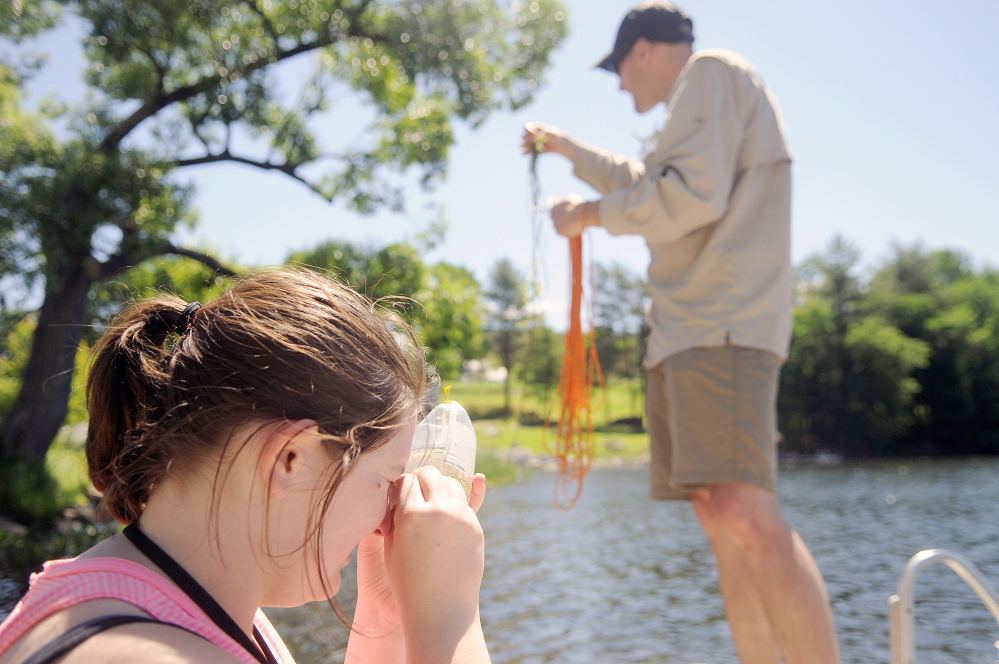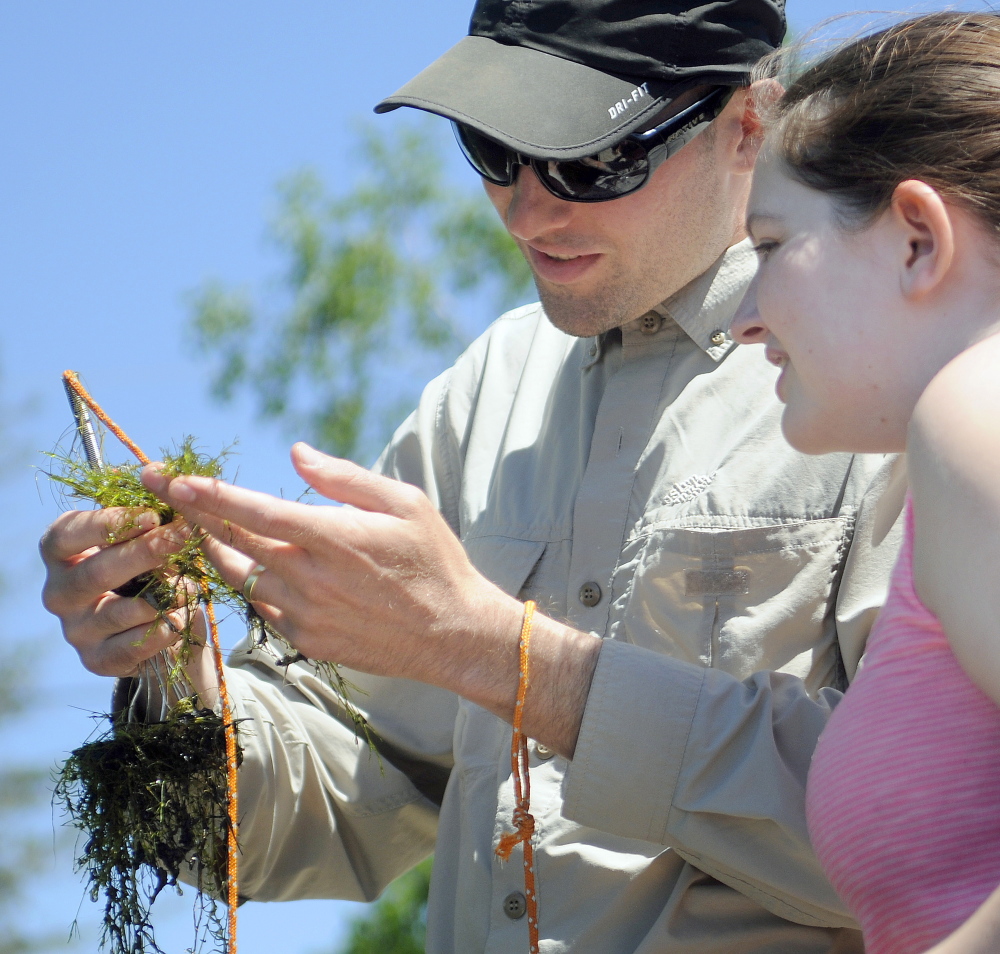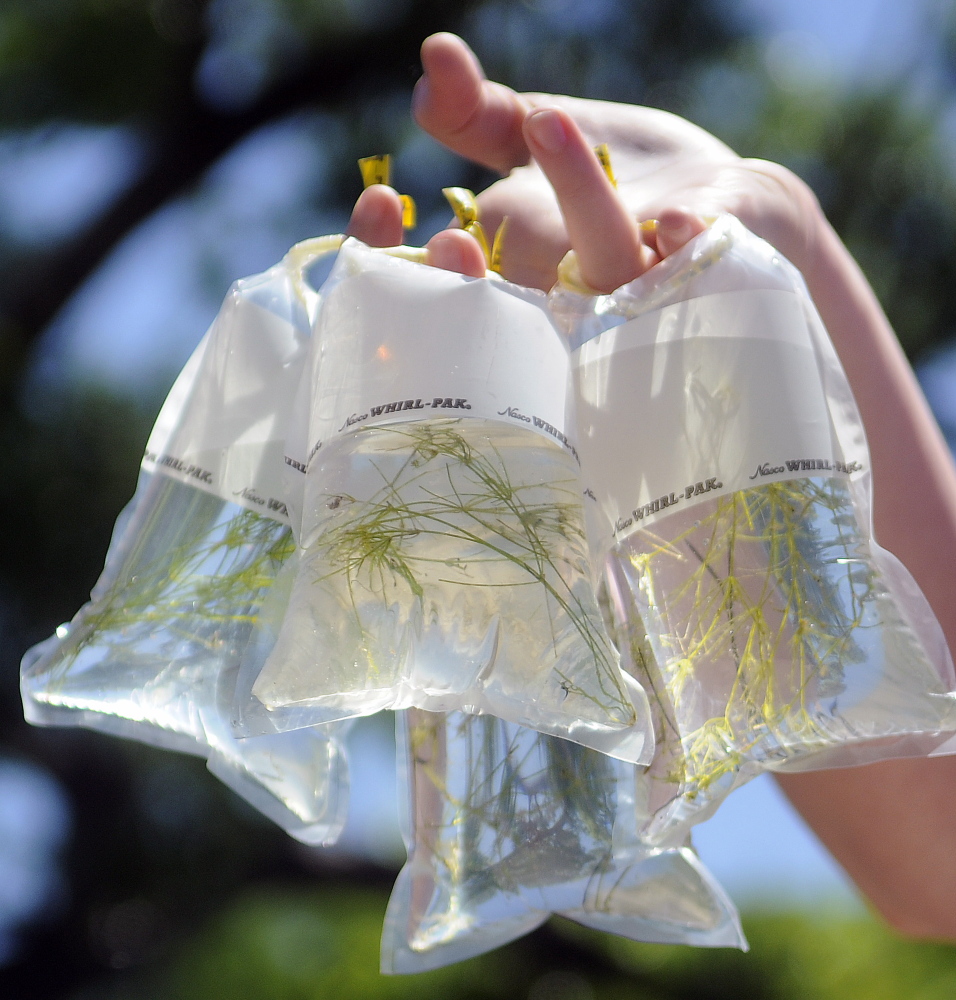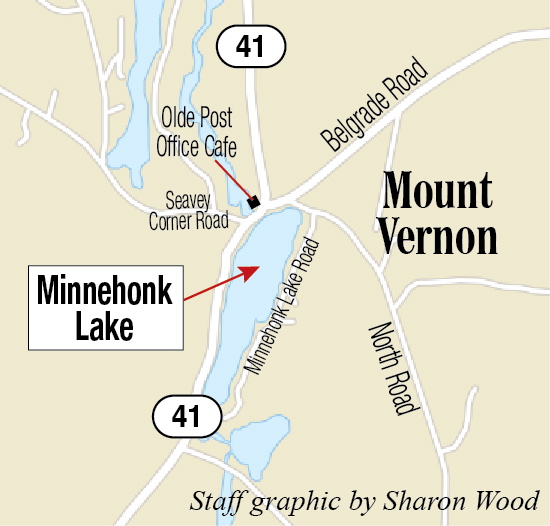A team from the New York Botanical Garden is in Maine this summer documenting species of algae while searching for an invasive species that has decimated lakes in New York state.
“We’re finding good diversity,” said the botanical garden’s Robin Sleith, who spent part of Wednesday collecting samples on Minnehonk Lake in Mount Vernon. “All of these species, up to a point, require intact and healthy water. When we’re finding them, that’s a good sign that these bodies are, up to a point, functioning well.”
Sleith, 29, is a studying for his doctorate in a joint program of the botanical garden and the City University of New York’s Graduate Center. He and his team are undertaking a survey of 700 bodies of water in New York and New England. The team spent last summer looking for the starry stonewort, an invasive species of algae that has taken over lakes in New York.
“It’s wreaking havoc in the lakes it gets into,” Sleith said.
Native to Europe and western Asia, the stonewort was discovered first in the St. Lawrence Seaway in 1978, presumably arriving on trans-Atlantic ships in the Great Lakes. It has since moved to inland lakes on private recreational boats and trailers, Sleith said.
The starry stonewort replaces native algae species when it gets into a body of water and forms dense mats that cover the bottom so well that fish have a hard time making a place to spawn, Sleith said.
Scientists know little about the stonewort, which is where Sleith’s team comes in. The men and women are documenting where the stonewort exists and the other, native species of algae that are beneficial to habitat.
“We don’t really have a handle on how many native species there are and where they’re distributed,” Sleith said.
There have been no reports of starry stonewort in New England, but the team continues to check for the algae while collecting and documenting native species.
“They’re really important for these water bodies, but we don’t know a lot about them,” Sleith said. “We don’t know how many there are in Maine and where they are.”
Before those beneficial species can be protected, they must be documented, Sleith said. That way scientists will know whether a species has become extinct or how pollution might affect it.
“What we’re doing is just baseline kind of work,” Sleith said.
The team is not working with Maine officials, but it plans to notify authorities if it finds evidence of an invasive species. Sleith said the best way to prevent the spread of invasive species is to make sure boaters clean their boats and trailers, drain the water from their boats and let their boats and trailers dry for at least a couple of days before moving between bodies of water.
Sleith’s team will conduct weeklong trips examining lakes in a specific area. He said they will cover about 175 points in Maine, from the coast to the north, over the course of the summer.
“We’re going to be spending a lot of time here,” Sleith said.
Send questions/comments to the editors.






Comments are no longer available on this story